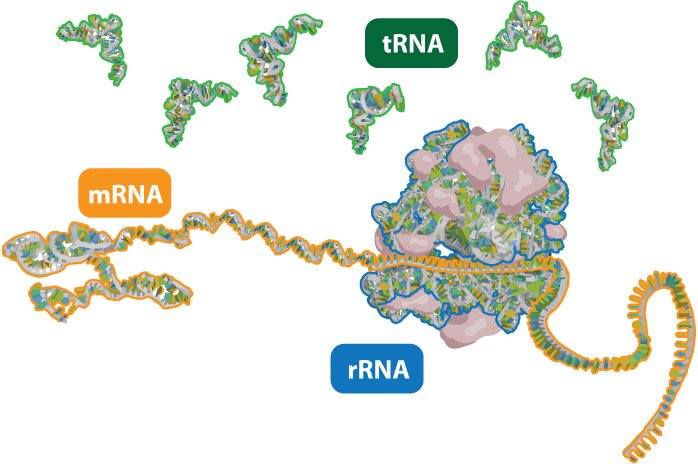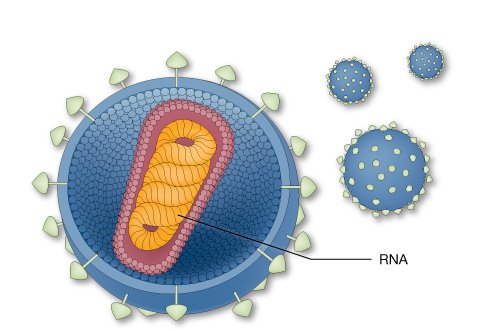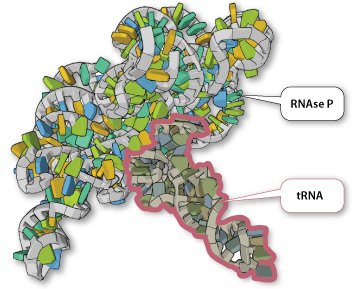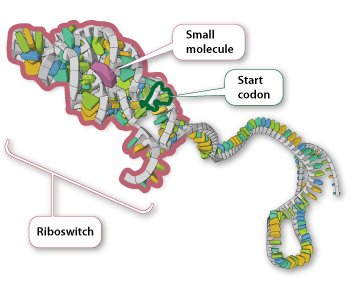Some RNA molecules can silence specific genes, turning off the production of proteins
that are not needed at a certain place or time. This job is especially important during
development, when cells begin to differentiate into specific types, such as muscle, skin,
and liver. Each cell type needs only a fraction of its total genes to be active in order to do its job.
Gene-silencing RNA molecules recognize specific genetic sequences through complementary
base-pairing. These RNA molecules can shut down portions of the genome, turning off protein
production. RNA does this by recruiting proteins to modify histones (or the epigenome).
Modified histones wrap DNA tightly, making it inaccessible to transcription machinery.
RNA interference. Scientists can use the cell's gene-silencing machinery to study genes. First, they build a small
RNA molecule with a nucleotide sequence that matches a specific gene. When the RNA is injected into an embryo, it finds the gene and
turns it off permanently so that no protein is made from it. By looking at what happens as the organism develops without the gene,
scientists learn something about the gene's natural function.
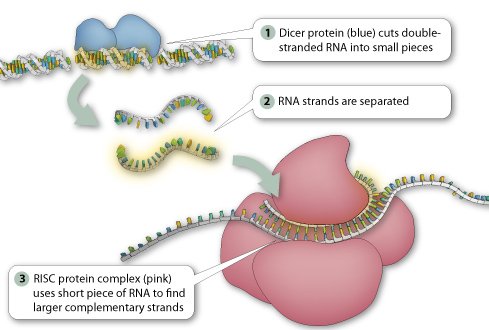
RNA interference is a natural process that cells evolved to destroy RNA-based viruses. Cellular machinery
identifies and cuts double-stranded RNA molecules (1). Then it uses the fragments to find longer complementary RNA strands (3), which it then destroys.
